
James Webb Space Telescope: Everything you need to know about the first images
The first batch of images are now available, depicting space in detailed snapshots and a graph.
The James Webb Space Telescope took 30 years and $10 billion to build, has flown over 1.5 million kilometres away from Earth, and now, we can finally see the first glimpse of its power with a collection of images.
NASA has promised the deepest image of our universe that has ever been taken, and these first sets of images are only the first step in a long job of expanding our view of the universe.
But what can you expect from these images, when and where can you see them this week and what will they cover?
The first images from the JWST
Deep image
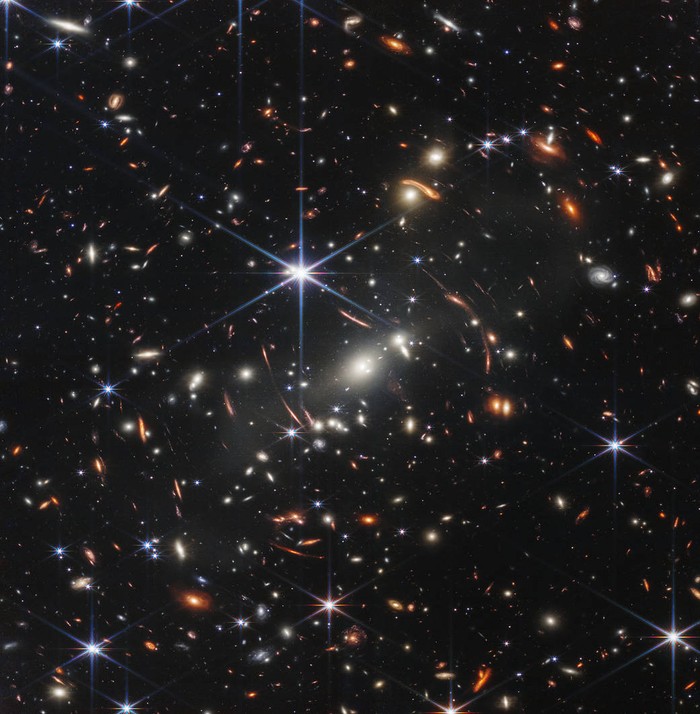
In a surprise turn of events, one image was released on its own. It came out the night before and was unveiled by President Joe Biden.
The image shows a distant galaxy cluster: SMACS 0723, seen here as it was 4.6 billion years ago.
This small section of the Universe covers a patch of sky that is roughly the size of a grain of sand held at arm’s length by someone standing on Earth.
The large bright white lights scattered across the image are stars found in our galaxy, the Milky Way. While these take up a lot of the image, what is more interesting is the smaller dots spread in between. These are all galaxies and the dots that have smudged or dragged are galaxies that are much farther away.
The image was achieved by making a composite of images taken at different wavelengths over a period that totalled 12.5 hours. The SMACS 0723 galaxy cluster is so big that it acts as a gravitational lens, in which the cluster’s gravity causes light to bend, as if it were passing through a physical lens.
In other words, this image was essentially captured by the JWST, a human-made telescope, pointing at the view created by a naturally made telescope, and the combination allows us to see incredibly distant galaxies.
More like this
WASP-96 b
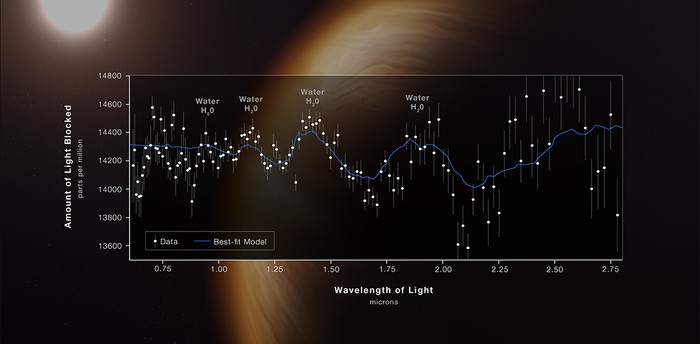
While the other images in this first group were all photos taken with the JWST, this image instead looked to give us an insight into space through a graph. It's a light graph that reveals key information about the atmospheric composition of WASP-96b, a hot giant exoplanet with a mass similar to that of Saturn.
The planet is located roughly 1,120 light-years from us, and the information in this graph shows water in the form of vapour, hazes and evidence of clouds.
The findings of this graph show the JWST could be used to identify planets that could be potentially habitable.
Star death
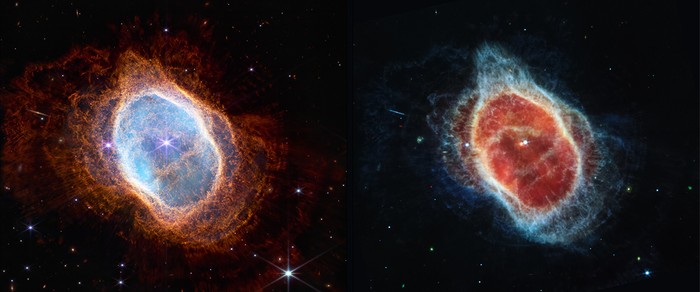
These stunning images produced by the JWST is of the Southern Ring Nebula. At the centre of the nebula is a dying star (seen in the blue section of the image on the left).
This dying star is actively expelling gas and dust which is creating the orange almost foam-like substances.
The image on the right is of the same Southern Ring Nebula. Unlike the one on the left which was taken using an infrared camera, this is studied through the Mid-Infrared Instrument (MIRI) which helps astronomers capture details which were previously hidden in dust.
Stephan's Quintet
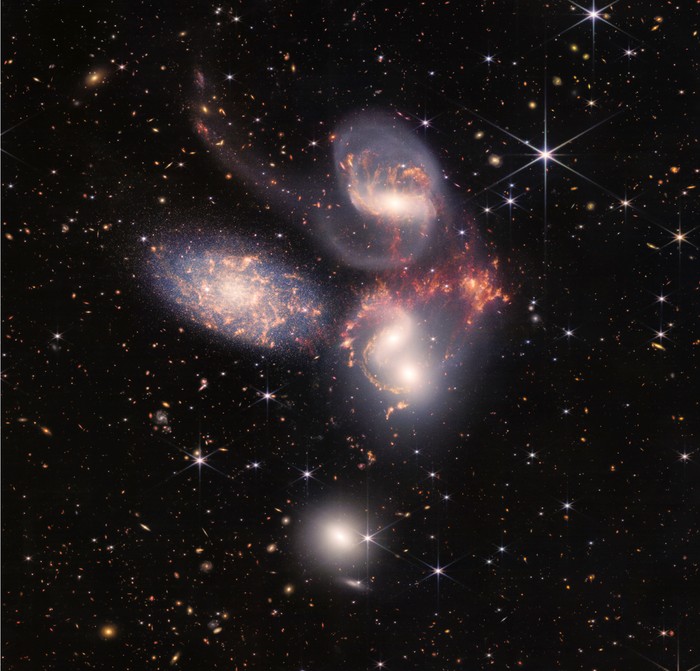
Originally identified all the way back in 1877 by Édouard Stephan, Stephan's Quintet is made up of five interacting galaxies that have the appearance of almost touching each other. While it looks like all the galaxies are the same distance away, one of them (NGC 7320) is actually much nearer at a distance of around 40 million light-years away.
The other galaxies are around 290 million light-years away. This grouping of galaxies being so near to each other allows scientists to witness their merging to get a better understanding of how galaxies evolve.
While this group of galaxies has been pictured before, JWST achieves more detail than before. Sparkling clusters of millions of stars and starbursts can be seen around the outside of the quintet, and the image also captures huge shock waves as one of the galaxies smashes through a cluster.
Carina nebula
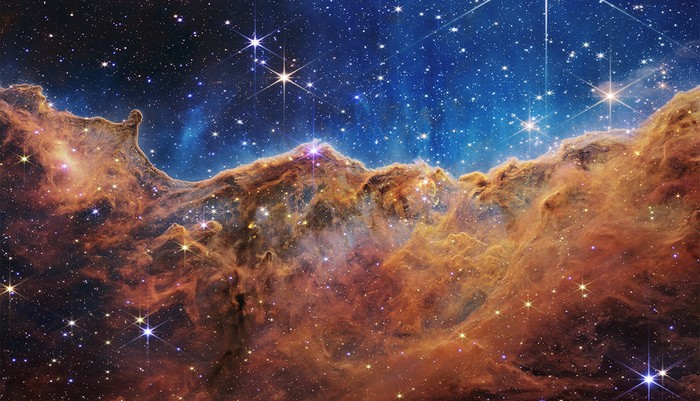
Squint your eyes and this photo could well be a mountainous range at night. This is in fact the edge of a young star-forming region in the Carina Nebula. This image reveals previously obscured areas of star birth.
It has been nicknamed the 'cosmic cliffs' and it is clear to see why. This is the edge of a gaseous cavity that is around 7,600 light-years away. This formation has been created by the intense ultraviolet radiation and stellar winds from supermassive, hot young stars located in the centre of the bubble (located just above what is viewable in this image.
Above the orange 'mountains' is a white steam like substance. This is in fact ionised gas and hot dust that is streaming away from the nebula due to intense radiation.
These observations and images of NGC 3324 will help to shed light on star formations and the birth of stars.
When will the first images come out and where can you see them?
Originally, all of the first images were going to be released together, but there has now been a change of plans.
The first official image from the James Webb Space Telescope will be revealed by Joe Biden on 11 July 2022 at 10pm BST. This is expected to be the deepest and highest-resolution infrared view of the universe ever captured.
This will then be followed up by a press conference on 12 July 2022 at 3pm BST with the rest of the images.
You can watch the press conference on NASA Live and ESA Web TV.
What will the first round of images show?

The JWST team has now announced the list of objects it has targeted with its first round of images. There will be five areas that are shown in these images:
Carina Nebula
Both one of the largest and brightest nebulae in the sky, the Carina Nebula is roughly 7600 light-years away. The Carina Nebula houses some huge stars, several of which are much larger than the Sun.
WASP-96b
WASP-96b is a giant planet that is found outside of our solar system. It is mostly composed of gas and is roughly 1150 light-years from Earth. It was discovered back in 2014.
Southern Ring Nebula
An expanding cloud of gas surrounded by a dying star, the Southern Ring Nebula is the perfect opportunity to test the James Webb Space Telescope's infrared images. It is nearly half a light-year in diameter and is around 2000 light-years away from Earth.
Stephan's Quintet
Stephan's Quintet is located an amazing 290 million light-years away. It is was the first compact galaxy group ever discovered all the way back in 1877 and will be the furthest image taken by the JWST.
SMACS 0723
SMACS 0723 is a patch of sky in the southern constellation of Volans. It has a massive cluster of galaxies in the foreground which act like a massive magnifying glass. This is because their incredible mass causes a noticeable curvature of the space-time around them, magnifying light from distant objects.
Where is the James Webb Space Telescope now?
The James Webb Space Telescope is now in L2 Orbit - its final destination, about 1.5 million kilometres from Earth. This is a journey that took roughly a month to complete.
You can track its progress with NASA's 'Where is Webb' feature. Not only does this show the current distance from Earth but also the telescope's speed, temperature, how long it has been in orbit and what its next stage is.
When did the James Webb Space Telescope launch?

The James Webb Space Telescope was launched on Christmas Day 2021.
If you were too busy opening presents and enjoying a Christmas dinner to watch the launch on television, you can view the launch again on the JWST YouTube channel.
While the telescope has now officially launched, it saw a huge number of delays to get to this point. The observatory was originally expected to launch back in 2007. Since then, it has experienced over 16 launch delays with the pandemic extending the date way past the last expected date of March 2021.
The telescope was launched on the Ariane 5 rocket. This is a specialised rocket designed to take satellites and other payloads into transfer or low-Earth orbit.
Who is James Webb?

You might be thinking, who gets the honour of having such a historic telescope named after them? Well, that title goes to James Edwin Webb, the second administrator of NASA, best known for heading up Apollo – the first space programme to send humans to the Moon.
He was also instrumental in the two crewed space programmes that followed on from Apollo: Mercury and Gemini. While Webb did eventually die in 1992, aged 85, he left a massive legacy behind, deserving of a telescope named after him.
“It is fitting that Hubble’s successor be named in honour of James Webb. Thanks to his efforts, we got our first glimpses at the dramatic landscape of outer space,” said former NASA administrator Sean O’Keefe about the observatory’s name. “He took our nation on its first voyages of exploration, turning our imagination into reality.”
The telescope hasn’t always been named after Webb. It started its life being known as the Next Generation Space Telescope which, realistically, isn’t the most imaginative name we’ve ever heard!
How big is the James Webb Space Telescope?
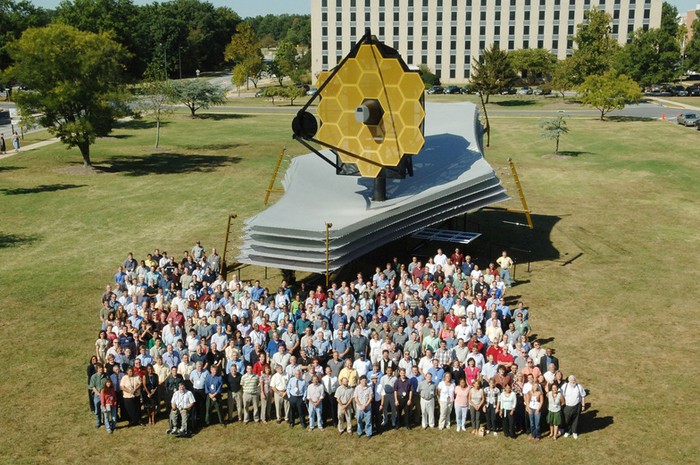
Billed as the successor to the Hubble Space Telescope, the JWST is the largest space observatory ever built. Its gigantic sun shield base measures a massive 22m by 12m, roughly the same size as a tennis court.
Although nearly twice as big as Hubble (which is only 13m long), the JWST is almost half the weight at 6,500kg.
The JWST’s gold-plated mirrors have a total diameter of 6.5m, much larger than Hubble’s 2.4m diameter plate. Overall, the JWST will have approximately a 15 times wider view than Hubble.
How far can the James Webb Space Telescope see?
Using its infra-red telescope, the JWST observatory will examine objects over 13.6 billion light-years away.
Because of the time it takes light to travel across the Universe, this means that the JWST will effectively be looking at objects 13.6 billion years ago, an estimated 100 to 250 million years after the Big Bang. This is the furthest back in time ever observed by humanity.
Where will the James Webb Space Telescope orbit?
After launching into space, the JWST will orbit the Sun, flying up to 1.5 million kilometres from Earth in temperatures reaching -223°C.
For comparison, the Moon is 384,400km away, while the Hubble Space Telescope flies only 570km above our planet. As the JWST will operate so far away from Earth, it will not be able to be serviced by astronauts if any faults arise.
What is the James Webb Space Telescope's mission?
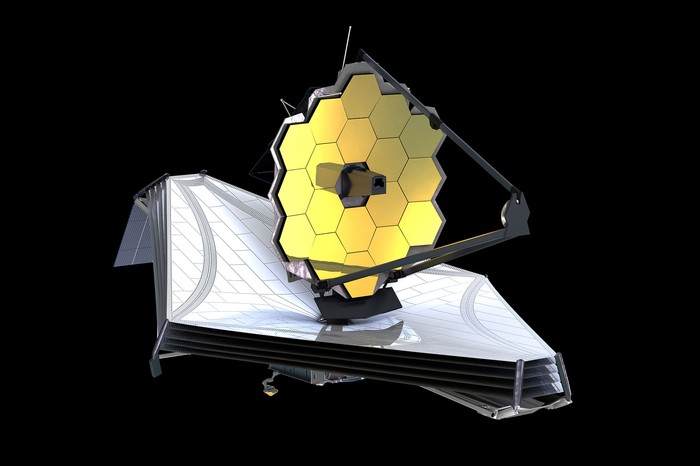
As the JWST is a product of an international collaboration between NASA, the European Space Agency (ESA), and the Canadian Space Agency (CSA), it has many mission goals.
These include:
- Examine the first light in the Universe and the celestial objects which formed shortly after the Big Bang.
- Investigate how galaxies form and evolve.
- Study the atmospheres of distant exoplanets.
- Capture images of planets in our own solar system.
- Locate evidence of dark matter.
The JWST is expected to operate for five years after its launch. However, NASA hopes the observatory will last longer than 10 years.
Unfortunately, the observatory won’t be able to operate forever: although mostly solar-powered, the JWST needs a small amount of finite fuel to maintain its orbit and instruments.
How is the James Webb Space Telescope different to Hubble?
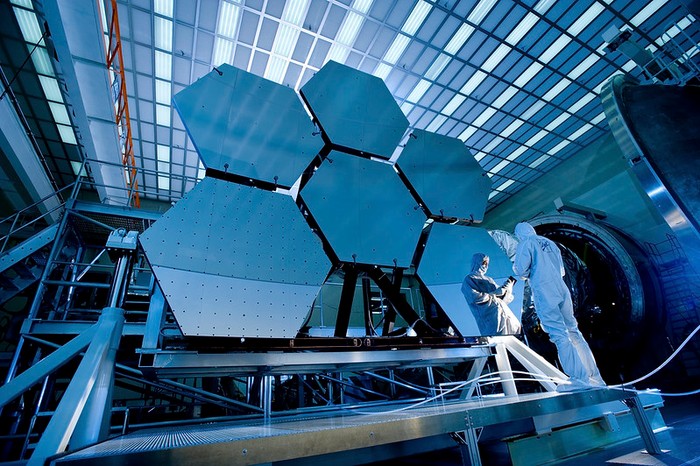
The James Webb is seen in many ways as an improved successor to the Hubble telescope which was launched way back in 1990. But are they similar or are these two telescopes drastically different?
Firstly, both telescopes see light in different ways. The Hubble’s main focus is on both visible and ultraviolet light. While it can observe a very tiny portion of the infrared spectrum, it is nowhere near the extent to which the JWST can.
The JWST is specifically designed to focus on the infrared spectrum. It can’t see in ultraviolet light as Hubble can, but it will be able to focus on bright objects like very distant galaxies.
The James Webb Telescope is also much larger than the Hubble, mostly due to its large sunshield. This is used on all space telescopes but is especially important with the James Webb due to its infrared cameras. If it isn’t kept cool, it could risk blinding itself to the lights of objects it is trying to observe.
One other key difference between the two satellites is the distance that they will be kept. The Hubble telescope orbited above Earth’s atmosphere but was near enough to be approached if repairs needed to be done.
The JWST on the other hand will be far away, around 1.5 million kilometres away! That’s both further than any human has ever travelled and too far for anyone to ever go repair the satellite if something goes wrong.
It will be this far out for a few reasons. It will be in a place where the gravity of the Sun and Earth work together to help keep the satellite in place, plus it will be far away from the reflected radiation of the Earth, helping keep it cool.
Read more:
Authors
Sponsored Deals

May Half Price Sale
- Save up to 52% when you subscribe to BBC Science Focus Magazine.
- Risk - free offer! Cancel at any time when you subscribe via Direct Debit.
- FREE UK delivery.
- Stay up to date with the latest developments in the worlds of science and technology.





